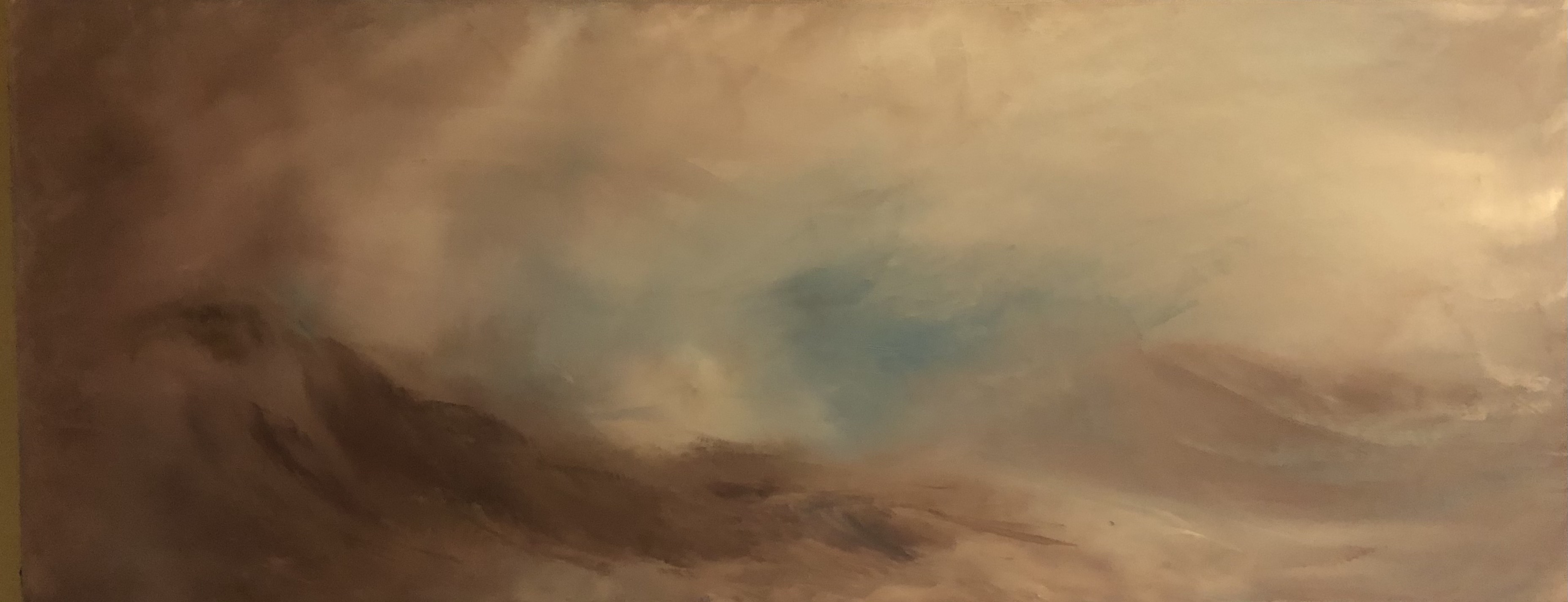Worship
In Pursuit of the Sublime

It took years to find the right word for what I felt when, one fall morning, walking our children to school in Aberdeen, Scotland, I passed a garden bordered by tiny flowers of the most intense, deep blues I had ever seen. The feeling they evoked occurred inside my chest, like a fullness, but also like a longing, a joy, but also an emptiness. The feeling was otherworldly, yet grounded (literally “grounded”) in the material world.
Later I told my wife Debbie what I had seen and the effect this deep blue color had on me. I said, “I don’t know what sort of flower those were.”
She replied, “Oh, those were Johnny Jump Ups, that’s what you saw.”
At first it seemed impossible to connect something so breathtaking, so near to ultimate beauty with so common a name, though later I realized that the conjunction was perfect.
This wasn’t the last time, nor was it the first, that I had this feeling, but it was the time that set me on a journey, to find the right word for what I felt. I found it, eventually, in an essay about the great nineteenth century painter J. M. W. Turner, the artist who, beside Mark Rothko, has influenced me more than any other as a painter.
The word I was looking for was “sublime.”
Specifically, in fact, it is referred to as “The Sublime.”
During the nineteenth century during the rise of Romanticism in literature and art in Europe, and related to the philosophical thought of Ralph Waldo Emerson and others in America, artists and intellectuals, wearied by the sterile preoccupations of Rationalism, turned their imaginations toward nature in search of Transcendence hidden within. They were in pursuit of “The Sublime,” that fleeting, awesome brush with otherworldly reality that reminds us of the hidden depths of being beyond the scope of human reason.
In her essay on Emerson, the poet Mary Oliver described this quest: “All the world is taken in through the eye, to reach the soul, where it becomes more, representative of a realm deeper than appearances; a realm ideal and sublime, the deep stillness that is, whose whole proclamation is the silence and the lack of material instance in which, patiently and radiantly, the universe exists.”*
This appearance of “a realm ideal and sublime” that quickens the heart has been noted for centuries in secular literature, and it corresponds to certain mystical experiences more common in religious history.
In the mid-twentieth century, C. S. Lewis gave the experience of The Sublime an especially imaginative treatment in his autobiographical book, “Surprised by Joy,” in which he wrote about a longing (which he named “joy”) that even unrequited enlivens the soul and is more satisfying than any possible fulfillment of desire. Like St. Augustine’s often quoted passage about the vacuum in our souls that hungers for God, but which is also more satisfying than any other feeling, the sense of The Sublime has the power to keep drawing us “further up and deeper in,” to borrow another phrase from Lewis.
There are paintings that do this, that draw us back again and again, just to bathe in their presence. I cannot visit the Metropolitan Museum of Art without standing and gazing long into Monet’s winter scenes along the Seine. One of my favorite memories is of a visit to the San Francisco Museum of Modern Art, sitting on a bench utterly transfixed by their large Rothko (No. 14, 1960).
As a visual artist myself I find the truth of Mary Oliver’s observation about the natural world confirmed again and again in paintings I love. But this experience also occurs in passages of music and poetry to which we return repeatedly to feel that otherness within the mundane, that heartbeat of the universe. In poems by Seamus Heaney, Louise Gluck, and Oliver herself, mystery is conjured in words from a mythic legend, or a domestic farm, or from a stagnant pool of water. In the first movement of Brahms’ Fourth Symphony or through the resonance of the Elgar Cello Concerto, the world itself seems to rise, yearning, stirring, striving, longing toward fulfillment with a groaning that does indeed have a voice but without the jabber of words.
And, of course, there are those glimpses of the eternal in and through nature itself of which Emerson and Oliver and countless others have written, those occasions when Nature (capital N) looks back at us and compels feelings and responses from us: Those blues I saw on a fall morning more than thirty years ago that vibrated with eternity and deserve to be named for Aphrodite and not some Johnny lately come jumping; those moments of predawn I experienced one morning last spring when mists clung to the foothills of mountains in North Carolina, which mysteriously appeared in a painting which I fully intended to be a seascape (Mountains Like Waves, oil and wax on canvas)
__________
*Mary Oliver, “Upstream” (Penguin, 2016), 71.